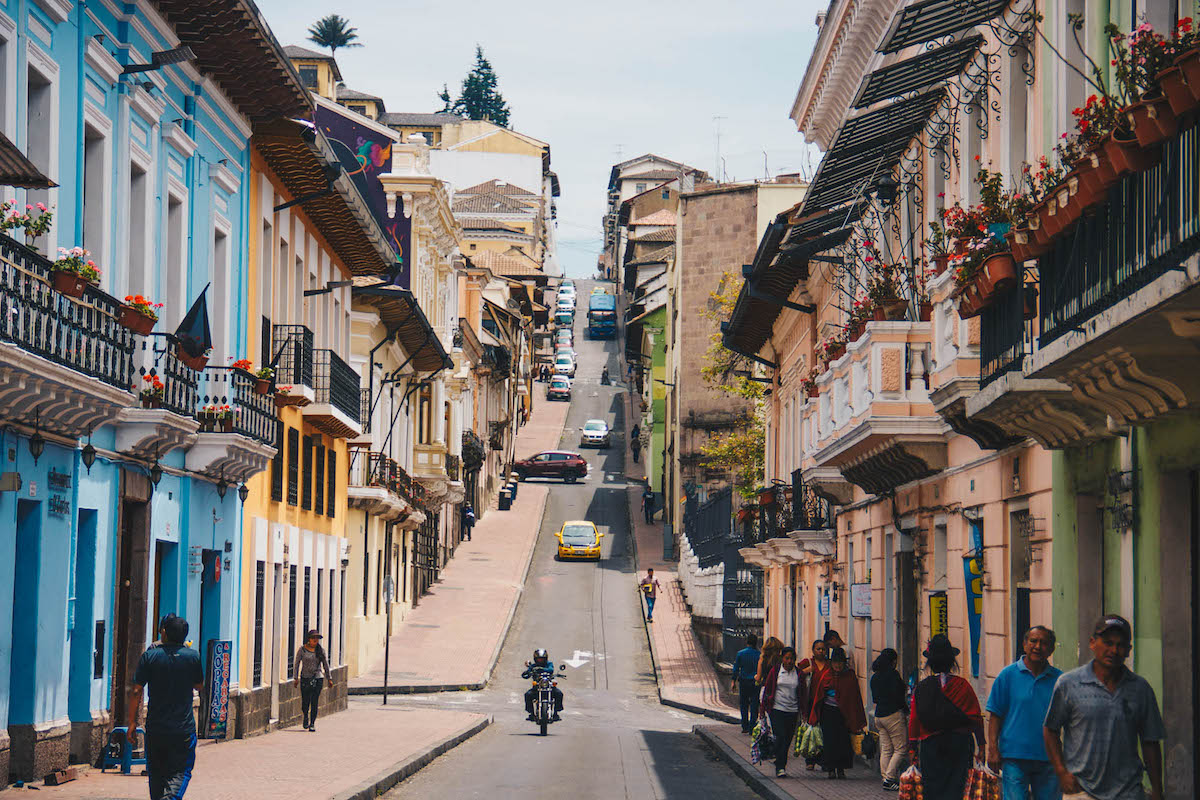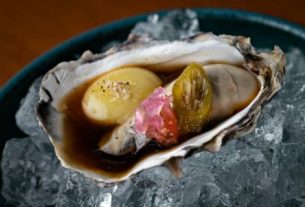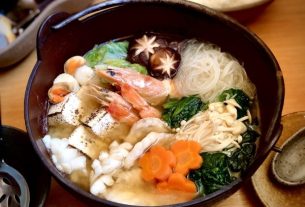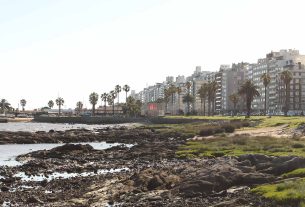Quito is one of the favorites of Latin American capitals. Perhaps it’s because of its beautiful and preserved historic center, the largest on the continent, which makes it feel like a small country town. But there is much more to do in Quito than getting lost in the center’s alleys. The city is located in a valley right in the middle of the Andes Mountains and is surrounded by volcanoes, lagoons over 3000 meters high and natural beauty.
What you need to know before traveling to Quito and Ecuador
The official currency of Ecuador is the US Dollar. Even though this means an unfavorable quote for us, it doesn’t make Ecuador an expensive country, as the cost of living there is very low.
Are you going to travel? Travel insurance is mandatory in Ecuador. See here how to get yours at a discount.
In terms of security, be extra careful when traveling in crowded places, such as the center and bus stations, as pickpockets in Quito are not uncommon. My cell phone was stolen on a bus and, when reporting the situation, I discovered that I was far from being the only tourist to be robbed there.
Remember that the city is 2850 meters above sea level, which means that you will need acclimatization in the first few days and may feel unwell due to the altitude. Take lighter walks until you get used to it, don’t overdo it with food or alcohol in the first few days and, if you can, drink some coca tea to help your lungs.
Where to stay in Quito
Most of Quito’s accommodation options are divided between the Historic Center and the bohemian area of La Mariscal. In the Historic Center, you will be close to the main attractions and will have good public transport options. La Mariscal is where the party takes place and also where some of the best restaurants in the city are located. It is a more wooded and modern region, far from the hustle and bustle of the center. See our guide to neighborhoods where to stay in Quito here.
Find hotels in Quito
What to do in Quito: attractions within the city
- Stroll through the historic center
- Climb to the Virgen del Panecillo viewpoint
- Visit the Guayasamín House-Museum and the Man’s Chapel
- Enjoy the nightlife in La Mariscal
- Eating the delicacies sold at Parque de Las Tripas
- Visit the Middle of the World Park
- Discover Cotopaxi, one of the largest active volcanoes in the world, and other volcanoes in the region
- Take a trip around the Otavalo Market
Stroll through the historic center
Quito’s colorful historic center is the largest in the Americas and also one of the best preserved. There are 3.75 km², more than 130 buildings listed as World Heritage Sites and 5,000 houses and shops that give the region its charm. Among them, the Church of the Society of Jesus (García Moreno n. 10-43, $5)whose interior is decorated entirely in gold, the National Palace and Plaza de la Independencia, to huge Basilica of the National Vote (Calle Venezuela with Calle Carchi, $2), which is so majestic that it has been compared to the Notre Dame Cathedral in Paris.
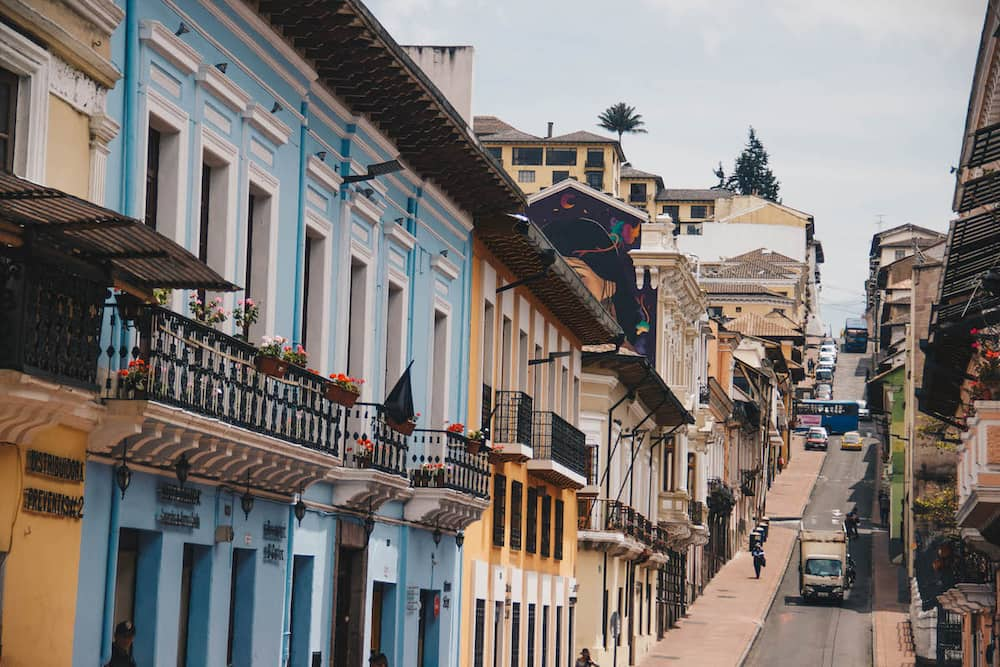
Don’t forget to also stop by Central Market (Av. Pichincha near Esmeraldas) to eat the traditional Crow with potatoes, a fish widely consumed in the country. The region of Round It is where the bars, restaurants and craft shops are located inside beautiful colonial mansions on the outskirts of the historic center.
Viewpoint of the Virgin of Panecillo
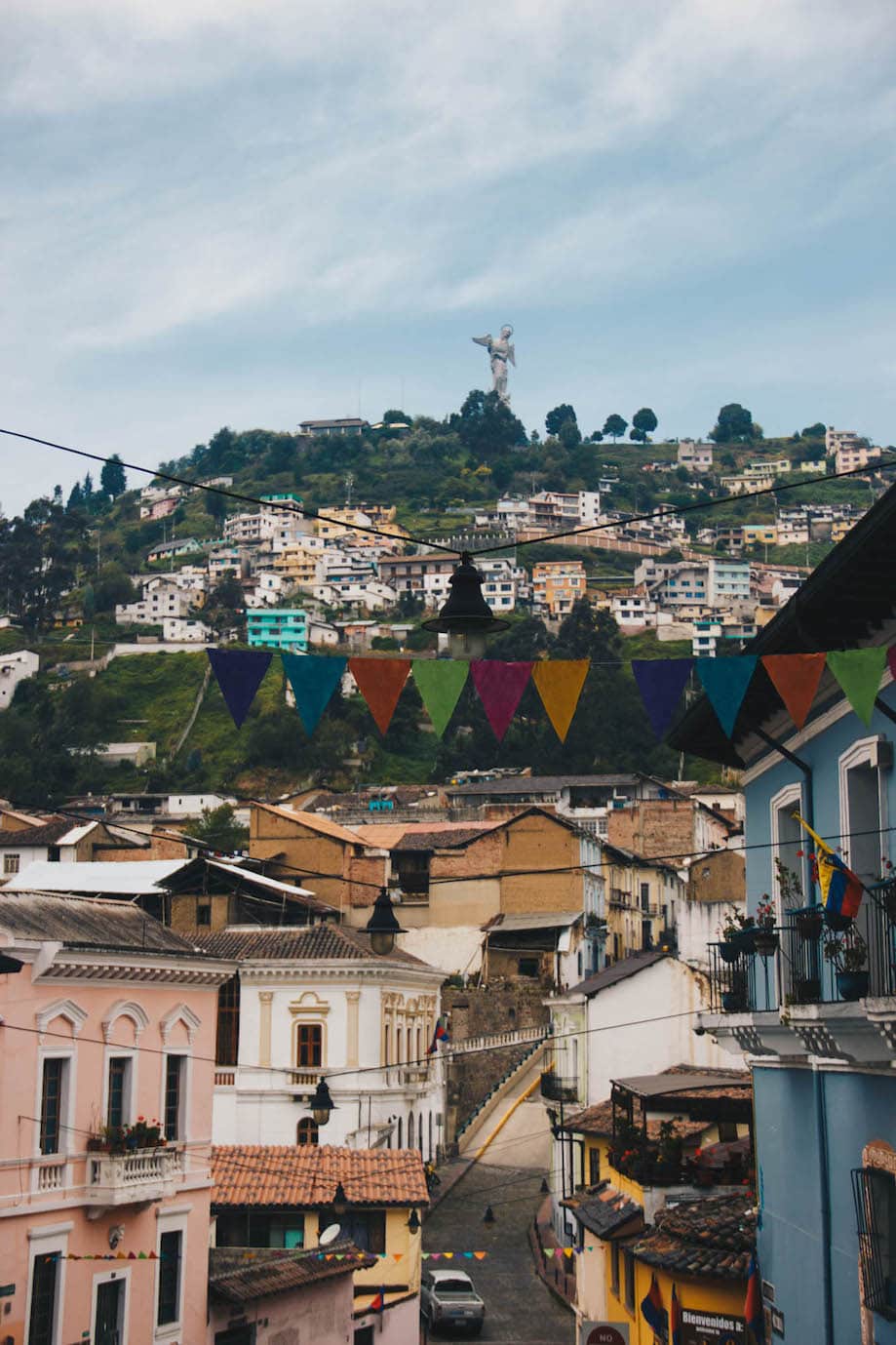
O Morro do Panecillo It is 3000 meters above sea level and is the main natural viewpoint in Quito. It gets its name from its rounded shape, which resembles a loaf of bread. At the top, a 30-meter-high sculpture of a virgin, entirely made of aluminum, seems to bless the city at its feet. To get there, go up Calle García Moreno from the Historic Center or take a taxi. The cost of the race is around $5.
Guayasamín House Museum and Man’s Chapel
The residence of the artist Oswaldo Guyasamín, one of the most important Ecuadorian painters, was transformed into a museum that houses his works, as well as his personal collection of objects and ceramics from pre-Columbian peoples.
On the same land is the Man’s Chapel, a project designed by Guayasamín as a tribute to humanity, a memorial to the native peoples of Latin America and a way of signaling hope for a better future. Guided tours in English, Spanish and French are included in the ticket price. Entrance to both attractions costs $8. It is on Calle Calvache E18-94 and Chávez. Official site.
Nightlife in La Mariscal
The streets of Quito’s most bohemian neighborhood are filled with locals and tourists every night, especially in the bars around Plaza Foch. Be sure to enjoy a night out – or just go out for dinner in these parts – to experience the true atmosphere of a younger, trendier Quito.
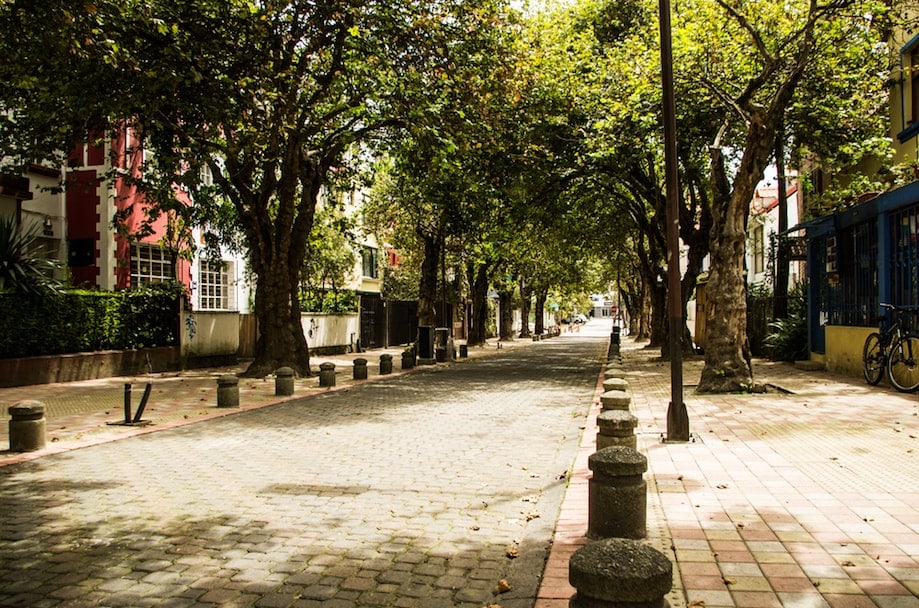
Shutterstock By Fotos593
Eating the delicacies sold at Parque de las tripas
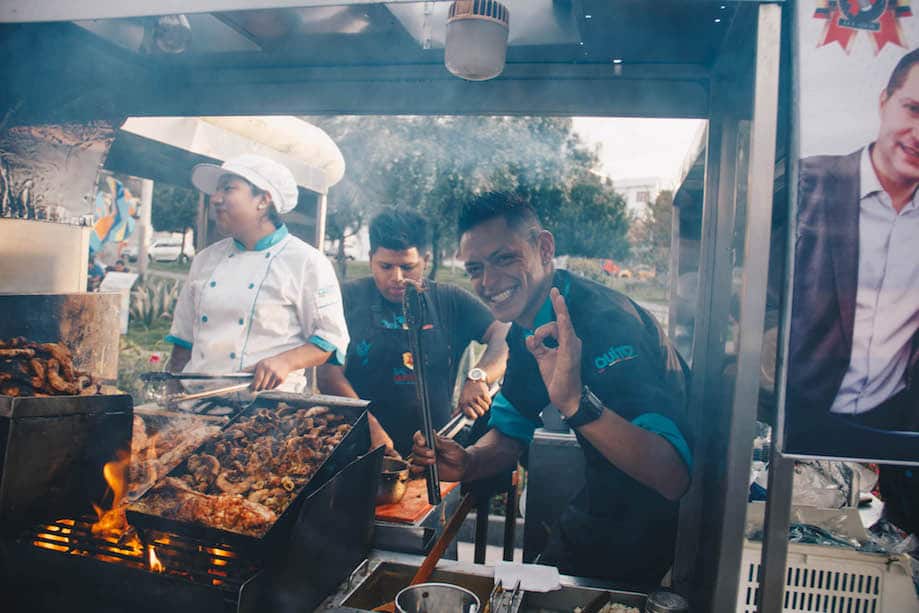
The rich Ecuadorian cuisine has its delicacies. And one of the best places for those with an adventurous palate is Parque de las Tripas, as Parque Navarro is popularly known. Every day, from 5pm onwards, the place is filled with food stalls with just one specialty: offal. It’s fried intestines on one side and kidneys on the other. A great place to discover the country’s popular gastronomic tradition.
What to do in Quito: surroundings and day trips
Many of Quito’s most famous attractions are actually outside the city limits. Check out some of them.
Middle of the World Park
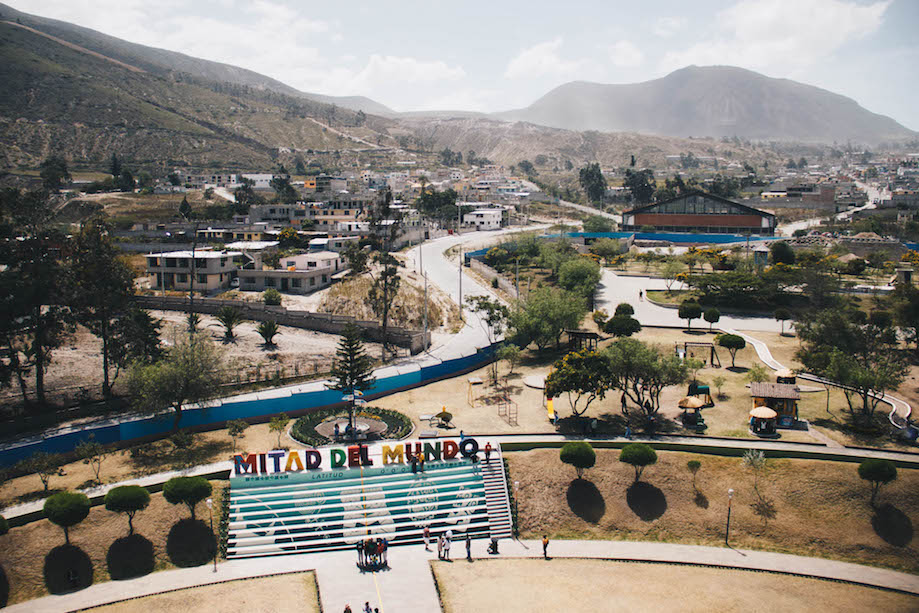
The park that marks latitude 0, where the Equator passes, is a 40-minute drive from the city center. In addition to having the pleasure of crossing from one hemisphere to another, there you can also learn more about Ecuadorian culture and history and about the country’s original people.
To get there, you need to take the BTS Central Norte at La Marín station and get off at Ofelia, which is the last stop. The journey takes around 50 minutes and costs $0.25. From there, take the buses that leave close to a sign indicating “Mitad del Mundo”, but ask the conductor first if that vehicle actually leaves you at the park, as the signs are a bit confusing. The trip takes another half hour and costs 0.15 cents. Entrance to the park starts at $3.50.
Read more about Half of the World Park.
Cotopaxi Volcano National Park
Two hours from the capital, the Cotopaxi Volcano National Park has 33 thousand hectares and 80 volcanoes in its area, including Cotopaxi, one of the largest active volcanoes in the world. Agencies in Quito offer a trip there for around $70, meals included. You can also get there on your own by taking the bus to Latacunga (you need to tell the driver where you want to go). In this case, it is recommended to hire a local guide at the entrance.
The Otavalo Market
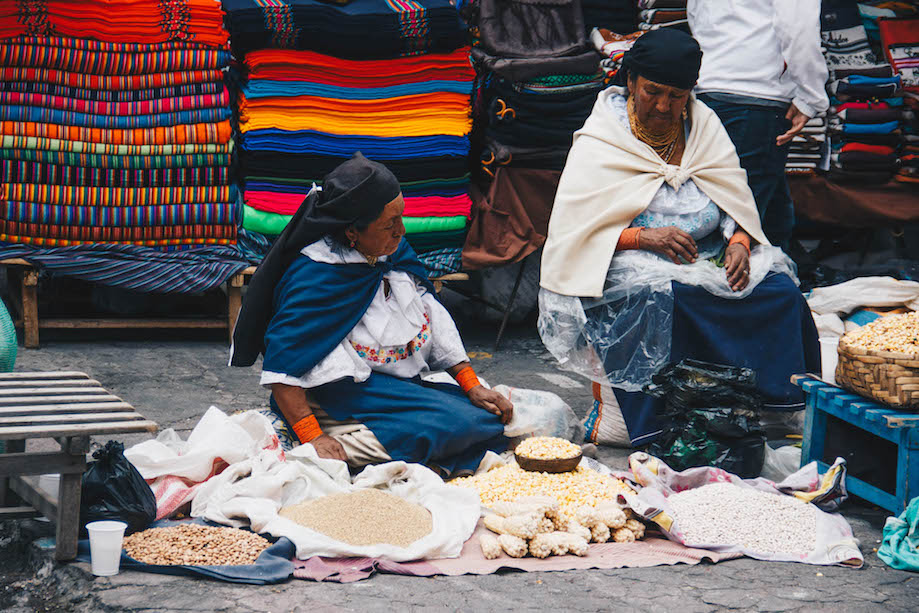
Located 100 km from Quito, the small city of Otavalo has the largest and most famous indigenous market in the world. There it is possible to buy genuine Otavaleño handicrafts, people with great ability to produce textile material and trade.
The prices are very attractive and the variety and beauty of the pieces is impressive. It’s no wonder that many people make this trip just to go shopping. The market operates daily, but the best day is Saturday, when not only the city’s central square, but also the surrounding streets, are filled with vendors. Buses to Otavalo leave from Quito’s North Terminal several times a day and cost $2.70.
Read more about What to do in Otavalo.
Quilotoa Lagoon
This brilliant volcanic lake is 3,880 meters above sea level and was formed inside the crater of an extinct volcano eight hundred years ago. To arrive on your own, it is best to rent a car or hire an agency in Quito. You can get there by public transport, but you need to make two transfers. The walk from the entrance is just ten minutes.
Sign up for our newsletter

Sign up for our newsletter and stay up to date with exclusive news
that can transform your routine!
Warning: Undefined array key "title" in /home/storelat/public_html/wp-content/plugins/link-whisper-premium/templates/frontend/related-posts.php on line 12
Warning: Undefined array key "title_tag" in /home/storelat/public_html/wp-content/plugins/link-whisper-premium/templates/frontend/related-posts.php on line 13

